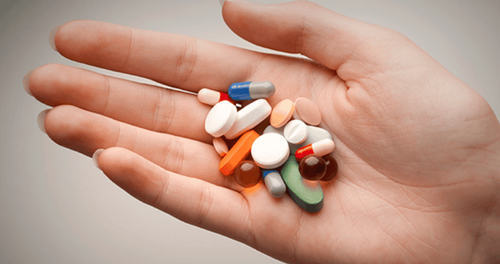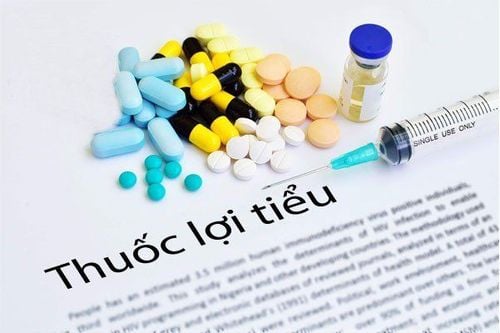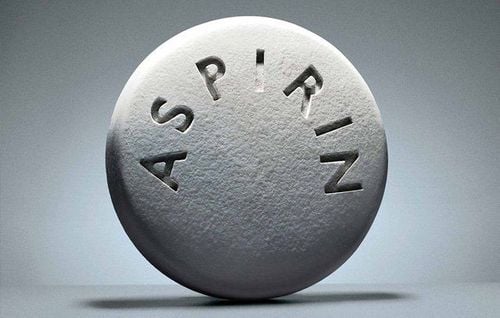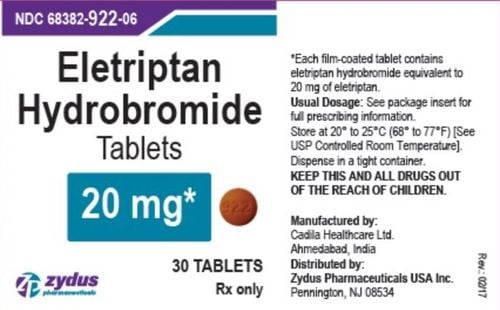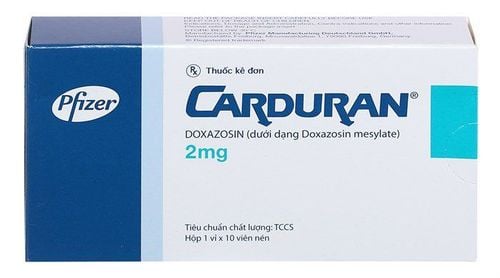This is an automatically translated article.
Angiotensin II receptor blockers are one of the important drugs in cardiovascular disease and hypertension. One of the common active ingredients in this class of drugs is Losartan, which is available in the product Pyzacar 25mg or 50mg.
1. What is Pyzacar 50mg?
Pyzacar has the active ingredient Losartan potassium in 25 or 50mg strength. What is Pyzacar 25mg? This is an antihypertensive product belonging to the class of Angiotensin II AT1 receptor antagonists.
Pyzacar 50mg or 25mg are both prepared in the form of film-coated tablets, each box includes 02 blisters corresponding to 15 tablets/blister.
2. Uses and indications of Pyzacar 25mg and 50mg
Pyzacar is indicated for use in the following cases:
Treatment of hypertension in adults and children from 6 to 18 years old; Treatment of kidney disease in adults with hypertension, type 2 diabetes and proteinuria above 0.5g/day; Support in the treatment of chronic heart failure in patients who are not suitable to use ACE inhibitors (due to dry cough or contraindications). It should be noted that patients with heart failure already on stable therapy with ACE inhibitors should not be switched to losartan; Treatment of chronic heart failure with clinically stable left ventricular ejection fraction (EF) less than 40%; Reducing the risk of stroke in cases of hypertension with left ventricular hypertrophy on electrocardiogram. Losartan is a known antihypertensive agent belonging to the class of Angiotensin II receptor antagonists. Losartan and its active metabolite inhibit the vasoconstrictor and aldosterone-secreting effects of angiotensin II through selective blocking of the angiotensin II AT1 receptor. Angiotensin II receptor blockers have similar therapeutic effects to ACE inhibitors, but have the advantage of not causing a dry cough (a common side effect of ACE inhibitors).
3. Dosage of the drug Pyzacar
Pyzacar can be used orally, once a day and independent of meals with specific dosages as follows:
Dosage in adults:
Treatment of hypertension: Initial dose and The recommended maintenance dose is 50 mg/day. The maximum antihypertensive effect is achieved after taking the drug about 3 - 6 weeks. In some cases, the dose can be increased to 100mg/day (in the morning) or in combination with other antihypertensive drugs (such as hydrochlorothiazide diuretic) to control blood pressure to the target; Treatment of kidney disease with hypertension, type 2 diabetes and proteinuria above 7.5g/day: The starting dose is 50mg/day, can be increased to 100mg/day depending on the patient's response after 1 month of taking the drug. Patients can completely combine Pyzacar with other antihypertensive drugs (such as diuretics, calcium channel blockers, alpha-adrenergic blockers, beta-adrenergic blockers, antihypertensive drugs acting on the central nervous system) or in combination with other antihypertensive drugs. hypoglycemic drugs (eg, insulin or oral hypoglycemic agents; Chronic heart failure: Start at 12.5mg/day, if not responding, double dose after 1 week, maximum dose is 50mg/day) Reduce the risk of stroke in hypertensive patients with left ventricular hypertrophy on electrocardiogram: The starting dose of Pyzacar is 50 mg/day, can be combined with a low-dose hydrochlorothiazide diuretic and/or increased Pyzacar dose to 100 mg/day. Dosage of Pyzacar in some special subjects:
Patients with intravascular volume depletion (such as using high-dose diuretics): The starting dose of Pyzacar is 25mg/day. Day; Patients with renal insufficiency and hemodialysis: No need to adjust the starting dose of Pyzacar; Patients with hepatic impairment: A lower dose is recommended in it's normal. However, its use is contraindicated in severe liver failure; Children: Children 6 months to <6 years: The efficacy and safety of Pyzacar in this population have not been established; Children 6-18 years old: If you can swallow the whole tablet and weigh 20-50kg, give Pyzacar 25mg/day, which can be increased to a maximum of 50mg/day according to blood pressure response. Children weighing more than 50kg can start Pyzacar at a dose of 50mg/day, which can be increased to a maximum of 100mg/day according to the child's response; Elderly: The recommended starting dose is 25mg/day for people over 75 years of age and in most cases no dose adjustment of Pyzacar is required.
4. Side effects of the drug Pyzacar
When using Pyzacar 50mg or 25mg, patients may experience some common undesirable effects (ADRs) as follows:
Dizziness; Increased serum potassium, urea or creatinine; Hypoglycemia ; Postural hypotension; Body weakness, fatigue; Anemia; CKD. Some uncommon side effects of Pyzacar:
Drowsiness; Headache; Sleep disorders ; palpitations, palpitations, angina pectoris ; Abdominal pain, constipation, diarrhea, nausea, vomiting; Rash, urticaria with itching; Shortness of breath, cough; Fainting, atrial fibrillation, cerebrovascular accident.
5. Contraindications of Pyzacar
Pyzacar 25mg and 50mg drugs should not be used in the following cases:
History of hypersensitivity to Losartan or other ingredients in Pyzacar; Pregnant women in the second and third trimesters of pregnancy; Severe liver failure; Combination of Pyzacar with drugs containing aliskiren in diabetes mellitus or renal failure (GFR < 60 ml/min/1.73m2).
6. Some cautions when using Pyzacar
Symptomatic hypotension may occur, especially at the beginning of Pyzacar therapy or when the dose is increased, the risk is higher when accompanied by hypovolemia or hyponatremia due to causes (eg high doses of diuretics, low salt diet, vomiting or diarrhea). The above problems should be controlled before starting treatment with Pyzacar 25mg or 50mg or starting at a lower than recommended dose;
Disorders of electrolyte balance: Common in patients with renal failure with or without diabetes. Studies in type 2 diabetic nephropathy showed a higher risk of hyperkalemia in the losartan potassium group compared with the placebo group. Therefore, patients with heart failure with a creatinine clearance of 30-50 ml/min should be closely monitored for serum potassium and creatinine clearance. At the same time, do not use Pyzacar in combination with potassium-sparing diuretics or supplement and substitute products containing potassium;
Inhibition of the renin-angiotensin system may alter renal function. Pyzacar, like other drugs acting on the renin-angiotensin-aldosterone system, can both increase serum urea and creatinine in patients with bilateral renal artery stenosis or renal artery stenosis in patients with a single kidney. Therefore, caution should be exercised when using Pyzacar in this group of patients;
Do not use the combination of Pyzacar and ACE inhibitors due to the high risk of impaired renal function. Patients with primary hyperaldosteronism do not respond to antihypertensive drugs by inhibiting the renin-angiotensin system, therefore Pyzacar is not indicated for this patient group;
Pyzacar 25mg or 50mg similar to other antihypertensive drugs can cause excessive lowering of blood pressure in patients with ischemic heart disease and cerebrovascular disease, thereby increasing the risk of myocardial infarction or stroke;
Caution when appointing Pyzacar in people with aortic stenosis, mitral stenosis or obstructive hypertrophic cardiomyopathy;
Dual inhibitors of the renin-angiotensin-aldosterone system (RAAS): There is evidence that the combination of ACE inhibitors, angiotensin II receptor antagonists, and aliskiren increases the risk of hypotension, hyperkalemia, and depression renal function. Therefore, it is not recommended to combine these drugs together. In cases where treatment with a dual RAAS inhibitor regimen is required, the patient should be closely monitored for renal function, electrolytes and blood pressure, and not to combine ACE inhibitors and receptor antagonists. angiotensin II bodies (such as Pyzacar) in patients with diabetic nephropathy;
7. Pyzacar drug interactions
The combination of Pyzacar with cimetidine may increase the area under the curve (AUC) of losartan by approximately 18%, however this does not affect the pharmacokinetics of the active metabolite of losartan;
The combined use of Pyzacar and Phenobarbital may result in an approximately 20% reduction in the AUC of both losartan and its active metabolite;
Other antihypertensive agents may increase the degree of hypotensive action of Pyzacar when used concurrently. In addition, combining Pyzacar with tricyclic antidepressants, antipsychotics, baclofen and amifostine may also increase the risk of excessive hypotension;
Pyzacar is extensively metabolized by the CYP2C9 system to the active carboxyl-acid. Fluconazole (which is an inhibitor of CYP2C9) in studies resulted in a 50% reduction in exposure and exposure to the active metabolite. In addition, treatment with Pyzacar and rifampicin (an inducer of CYP2C9) reduces plasma concentrations of the active metabolite of losartan by approximately 40%. However, these interactions are not clinically relevant;
Pyzacar should not be combined with potassium-sparing drugs, potassium-sparing drugs (such as heparin) or supplements and substitutes containing potassium, because of the risk of increased blood potassium levels;
Close monitoring of serum lithium levels is required when lithium salts are combined with Pyzacar;
Co-administration of angiotensin II receptor blockers with NSAIDs may reduce the antihypertensive effect of losartan or decrease renal function, increase blood potassium.
Knowing the information on how to use it will help the process of using Pyzacar to be more effective and optimal for the patient's health.
Please dial HOTLINE for more information or register for an appointment HERE. Download MyVinmec app to make appointments faster and to manage your bookings easily.




